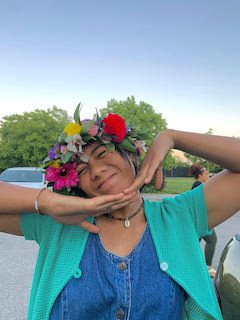 (Photo: Provided via Ovava Tonga)
(Photo: Provided via Ovava Tonga)
Small nose, high nose, slim figure, curvy figure, full lips, slender face. As girls mature, more and more emphasis is placed on their appearances. This already causes extensive damage to the self-images of girls at large. There is no denying that almost every woman has dealt with numerous insecurities as they have grown up, but women of color have a unique experience that needs to be recognized.
When Eurocentric beauty standards cast them to the periphery, young girls begin to hyper-fixate on minimizing their ethnic features. The standard has been, and continues to be, defined with white women in mind. The features deemed most desirable are typically prevalent in European genetics.
Ovava Tonga, an 18-year-old Tongan woman, shared how she had always worried about changing her facial features to look as white as possible to fit into this demanding beauty standard. “I felt like I had to put on more eyeliner to make my eyes look longer or kind of contour my nose so that people didn’t notice it,” she said.
“It’s definitely caused some depression and a lot of anxiety. I became really self-conscious whenever I went to Utah, especially because I was surrounded by white people and I knew I was going to be the only brown person,” Tonga added.
People ranging from relatives to strangers have told her, “You’re pretty for a brown girl” or “If only you weren’t so dark.” These comments have followed Tonga around since she was 12, weighing down her self-image.
“Throughout middle school and high school, I always thought that I would never be pretty enough to be just attractive to most people,” she explained.
For many years, white seemed to be the only standard. However, as of late, something fascinating has been happening with America’s perception of beauty. White is no longer the most desirable — yet it confusingly is centered still.
It seems that the current trendiest look is white women wearing the faces of women of color. Tan skin, big lips, and angled eyes are somehow only considered beautiful when adorned by a white woman. The features that women of color had been shamed for are now popular.
This pattern has been seen with white celebrities, like the Kardashians and Ariana Grande, making their skin darker and appear more racially ambiguous. Lately, the “fox eye” look, which imitates the shape of East Asian eyes, is coming under critique. Why is white culture now so obsessed with the faces of people of color?
According to bell hooks, a feminist scholar, “There is pleasure to be found in the acknowledgment and enjoyment of racial difference. The commodification of Otherness has been so successful because it is offered as a new delight, more intense, more satisfying than normal ways of doing and feeling.”
The features of women of color have turned into alluring commodities but more specifically accessories. It seems that remnants of colonization are still floating around beauty. They have pilfered our countries for goods and now they pilfer our faces for features. While young women of color are made to be ashamed of their natural features, young white women are glorified for possessing the same artificial features.
However, this is not a simple critique of white individuals making choices for their appearances. Tanning and eyeliner are not the problems. The problem is that women of color are not part of ideas of beauty. Changing this means rewriting much of our culture.
We need more representation. Young girls need to find beauty within people that look like them. We need less focus on women’s appearances. Girls should be able to value their wit, their charm, or their strength before they start criticizing every angle on their faces. We need to teach kindness to our children so they understand how easily words can tear apart confidence. Racially charged comments do not need to be haunting young girls of color throughout their development.
If we want to do better for the next generation of young girls, we need to redefine beauty.